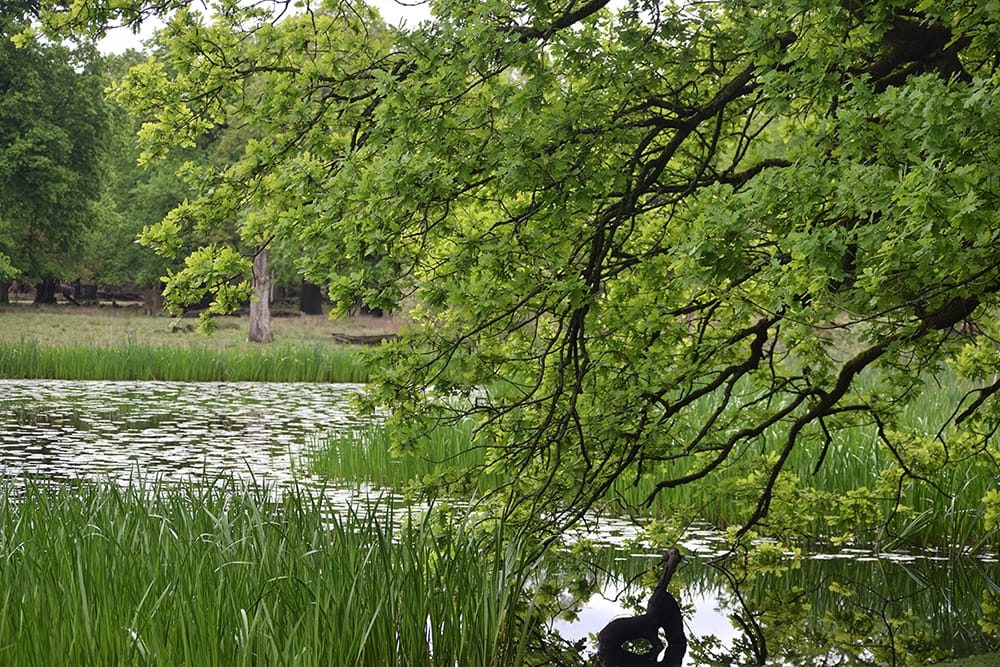
The Lost Wetlands Nature Recovery Project (NRP) is transforming the wetland landscape of northern Cheshire and southern Greater Manchester.
Once a network of interconnected ponds, mosses, and wet woodlands, much of this historic wetland was drained over centuries for agriculture and urban development. The NRP aims to restore and rewet these habitats, creating a thriving, resilient landscape that benefits biodiversity, water management, and local communities.
We worked closely with Natural England, the National Trust, Trafford Council, and City of Trees, alongside other partners, on two linked pieces of work: regional mapping of historic and current ponds to identify restoration opportunities and site-scale wetland design at William Wroe Meadows, a former golf course now protected as a community greenspace.
Historically, the project area supported thousands of ponds, which provided vital refuges and corridors for wildlife. Over time, industrialisation, urbanisation, and agricultural intensification led to the loss and fragmentation of these habitats. We conducted a comprehensive mapping and analysis of 73,000 hectares using historic maps, aerial imagery, LiDAR data, and OS datasets. The team identified over 13,000 pond features, including lost and potential ponds, sometimes called ‘ghost ponds’, which could be restored to revive lost seedbanks and re-establish wetland biodiversity.
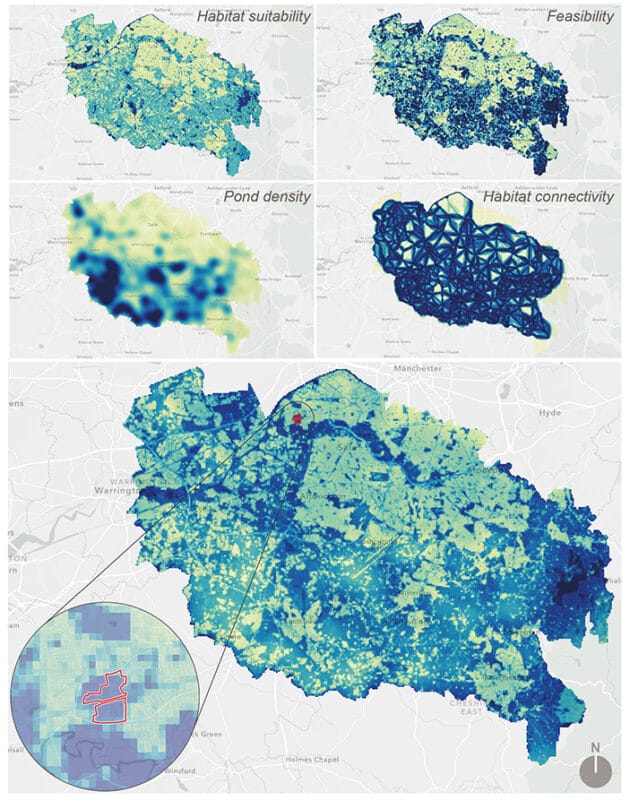
Pond Opportunity Mapping
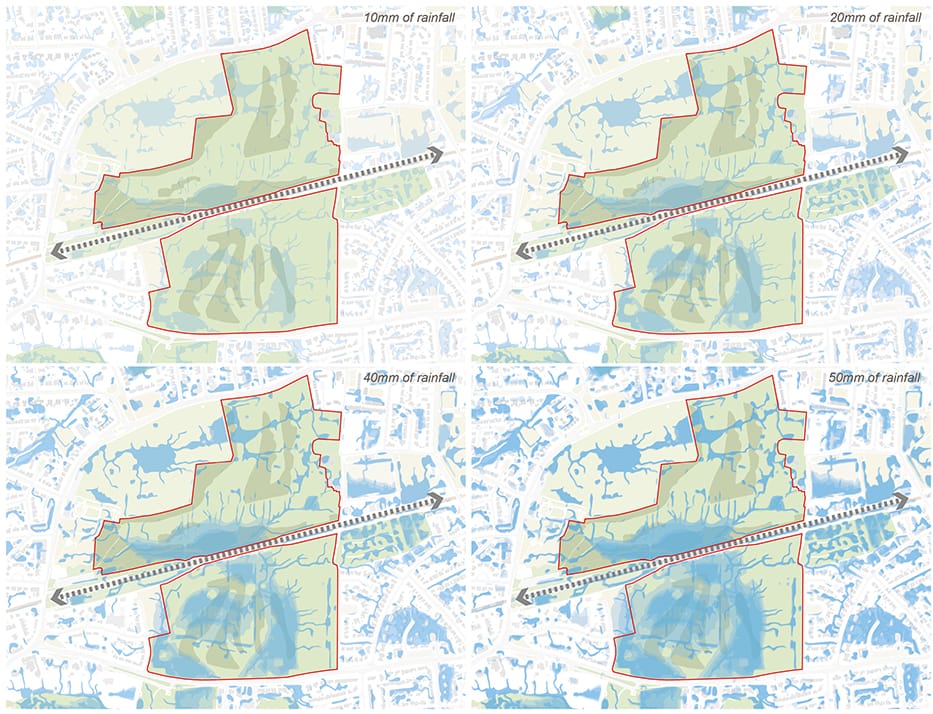
Flow Accumulation SCALGO Mapping
The former William Wroe Golf Course in Flixton has been identified for wetland restoration. Working with drainage engineers, we developed a masterplan based on the site’s hydrology, ecology, and infrastructure. The design introduces wet woodlands, reedbeds, ephemeral pools, grassland, scrub, and deadwood habitats, alongside paths and boardwalks for community access. Developed in collaboration with local stakeholders through workshops, surveys, and volunteer days, the plan supports species such as the declining Willow Tit while also reducing flood risk, improving water quality, and providing a valuable space for community use, education, and long-term stewardship.
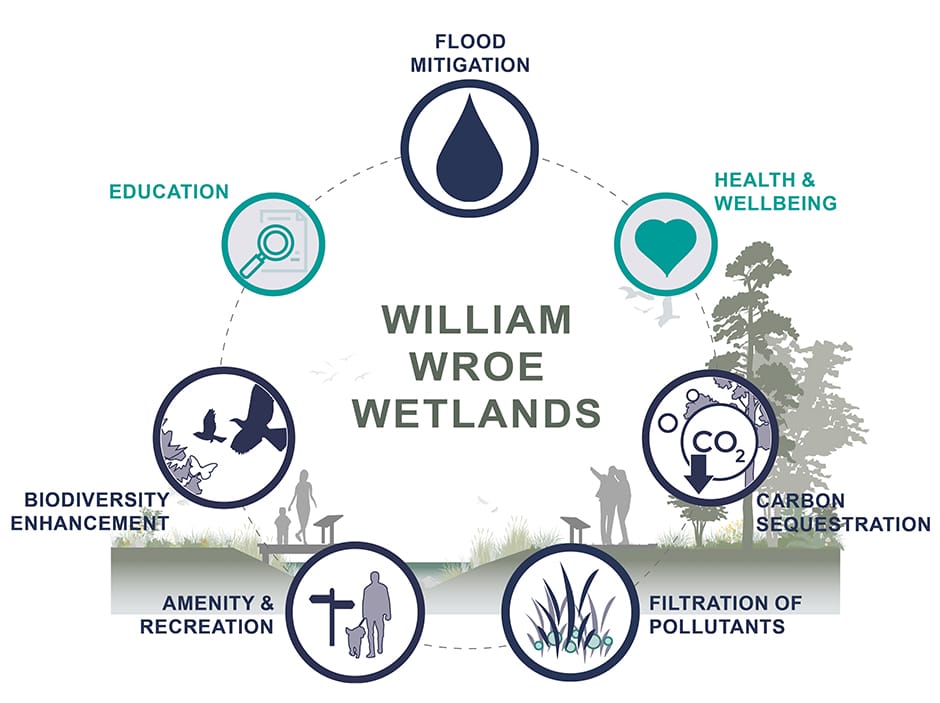
Strategy Diagram
The Lost Wetlands project showcases best practice in evidence-led wetland restoration, combining regional assessment, site-specific design, hydrological analysis, and community engagement. The outputs are now being used to guide restoration across Cheshire and Greater Manchester, forming part of a wider strategy to reverse biodiversity loss, improve climate resilience, and reconnect people with nature.
We’re proud to play a part in this ambitious initiative and even prouder that it’s been shortlisted for the Excellence in Biodiversity Conservation and Enhancement Award at this year’s Landscape Institute Awards. The winners will be announced in London on 14th November, watch this space!
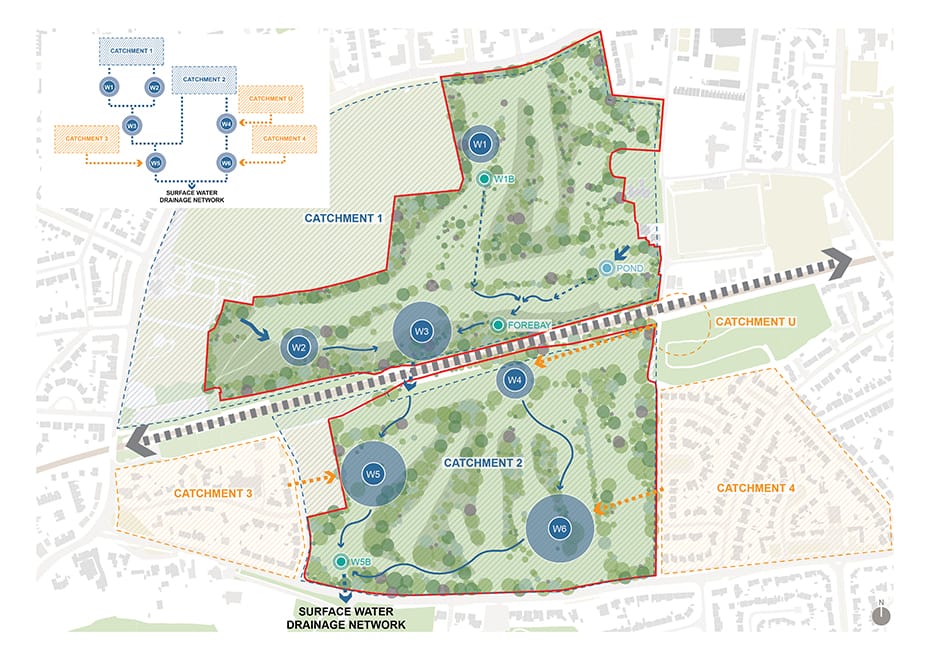
Wetland layout and network diagram








